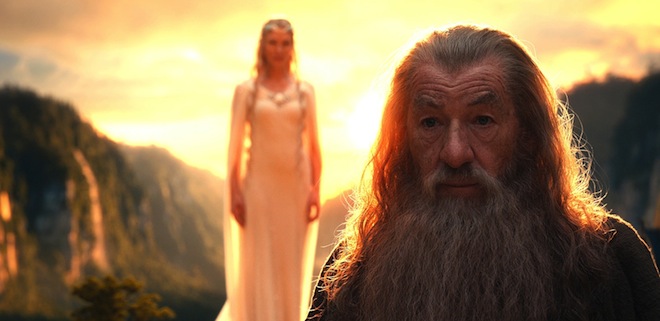“Photography is truth. The cinema is truth twenty-four times per second.” – Jean Luc Godard
“Cinema is the most beautiful fraud in the world.” – Jean Luc Godard
Cinema used to be an illusion, but now the camera is putting extra pressure on filmmakers to keep up the illusion. Drawing on a conversation I had a few months ago with a VFX supervisor, EOSHD presents the challenges and problems that 4K and 48p (HFR) bring to the film set.
Jean Luc Godard claimed cinema was truth at 24 frames per second, it is actually lies at 24 frames per second.
Suspension of disbelief is necessary so that the hand of the filmmaker disappears and you, the viewer, are immersed in the story. The most effective films did this so well people fainted.
I have no doubt the new camera technology brings people closer to the truth, at 48 frames per second. But what about the lies?
I have a feeling the audience isn’t so impressionable now we have 4K and 48p.
EOSHD forum user and VFX supervisor “BurnetRhoades“:
Set designers, indeed film directors could until now rely on a certain amount of impressionistic leeway. The audience couldn’t see through it. For decades people have been fooled by visual alchemy, quite literally. Metal they accepted as real actually being wood. Stone that’s actually cardboard. Glass that’s actually plastic. Metal that’s actually plastic.
I’ll never forget the first time I walked directly from a screening room, viewing film dailies from a previous day’s miniature shoot to compare the amazing images I’d just seen on film with what was actually photographed.
The difference was astounding, in this case, a crane shot booming up through a burnt-out cathedral to see the sun flaring out the lens, peaking through a smashed stained-glass window. If you’re familiar with Interview With the Vampire you might remember the scene. In actuality the cathedral was maybe 5′ in height, made mostly of painted cardboard and the sun was a lightbulb. You can forget about that kind of magic with a GH2 much less the 4K future.
The make-up effects industry is already on the down slope. They’re even less prepared to deal with 4K than the set craftspeople or model makers. Contemporary make-up effects cannot even stand up to conventional HD photography very well because digital renders rubber as rubber, paint as paint. It doesn’t look like alien skin. It doesn’t look like human flesh. It doesn’t look like anything but what it actually is.
This I believe perfectly sums up what is wrong with the HFR version of The Hobbit. You can’t suspend belief if the set looks like a set, if the props look like props, as if you are watching a carefully staged film set operating.
Sean goes on…
The loudest voices pushing technology in filmmaking since George Lucas first shot digital, 3:1:1 green screen plates that all had to be hand-rotoscoped because keying didn’t work with early HDCAM have always been incredibly myopic (short-sighted). It’s funny he, Cameron and Jackson have all been hailed as visionaries and revolutionaries in this new, digital century and yet the only reason some of their decisions weren’t complete failures was due to the sweat and long hours of literal armies of digital professionals who fixed their filmmaking and try and turned their lie into some form of truth. Rodriguez didn’t have an army to depend on, initially, and relied on denial.
The Hobbit’s ambition outstrips reality. You can’t stage an elaborate fantasy like you did in the days of 24p without vast, drastic changes to filmmaking practice.
Maybe these changes are a good thing and we will see more emphasis placed on design skills and the artistry involved in set design once more, which little by little is being replaced by CGI. These aspects of filmmaking are vitally important.
Maybe one day a film is going to come along with such realistic sets and CGI that it will blow our socks off in 48p. With every new technology it takes a while for human beings (and art) to catch up.
I am also very keen to see documentaries and a dogma style of filmmaking shot in 3D at 48 frames per second like The Hobbit. If you want to show reality as it is, then you reveal every detail and leave nothing to the imagination.
The problem is, most good narrative filmmaking rarely works this way. It is about obfuscation, supposition, suspense and magic.
I can understand Peter Jackson wanting to show off the incredible work of his brilliant team of set designers, craftsmen and artists in the most detail possible but it is a bit like slamming a flashbulb in the face of a model. Maybe we should back out of realism altogether, avoiding any photo realism craze and instead look at ways to make the experience more unreal, less clinical. This is certainly the direction I’ve leaned towards with in my own filmmaking, with the choice of dreamy soft lenses and anamorphic.



